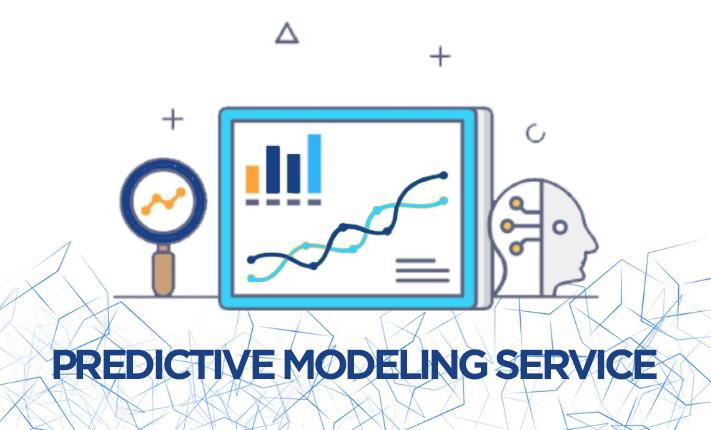In today’s data-driven world, businesses are increasingly relying on data analytics to make informed decisions. One of the most powerful tools within business analytics is predictive modeling techniques. These techniques use historical data, statistical algorithms, and machine learning to forecast future outcomes, enabling businesses to predict trends, identify opportunities, and minimize risks. In this blog post, we’ll explore how predictive modeling techniques are revolutionizing business analytics and transforming industries worldwide.
What Are Predictive Modeling Techniques?
Predictive modeling techniques are methods used to create models that forecast future events or behaviors based on historical data. By analyzing patterns in past data, businesses can predict outcomes, such as customer behavior, market trends, and operational performance. These predictions help companies make proactive decisions that optimize efficiency, reduce costs, and improve customer experiences.
Some of the most common predictive modeling techniques include regression analysis, decision trees, random forests, neural networks, and support vector machines. The choice of technique depends on the type of data, the problem being solved, and the complexity of the analysis.
How Predictive Modeling Techniques Are Transforming Business Analytics
Predictive modeling techniques are fundamentally changing the way businesses approach data analytics. Here’s how they are revolutionizing business analytics:
1. Improving Forecasting and Demand Planning
Accurate forecasting is crucial for businesses across all sectors, whether it’s predicting customer demand, sales, or inventory needs. Traditional forecasting methods often rely on historical trends, but predictive modeling techniques take this a step further by incorporating multiple variables and data sources. This allows businesses to create more accurate and reliable forecasts, ensuring they are well-prepared for fluctuations in demand.
For example, retailers can use predictive models to forecast seasonal demand for products, helping them manage inventory more effectively and avoid stockouts or overstocking.
2. Enhancing Customer Insights and Personalization
One of the most powerful applications of predictive modeling is in understanding customer behavior. By analyzing past interactions, purchase history, and preferences, predictive models can help businesses segment their customers and predict future actions. This enables businesses to offer personalized recommendations, targeted promotions, and customized experiences that drive customer satisfaction and loyalty.
For instance, e-commerce companies use predictive modeling to recommend products based on previous customer purchases or browsing history, significantly improving the chances of a sale.
3. Optimizing Marketing Strategies
Predictive modeling plays a crucial role in marketing by helping businesses optimize their campaigns. By predicting customer responses to various marketing strategies, businesses can tailor their messages to the right audience, at the right time, and through the right channels. This leads to more efficient marketing spend and higher conversion rates.
With the help of predictive modeling techniques, companies can identify high-value customers, determine the most effective marketing channels, and forecast the potential success of various marketing initiatives before they launch.
4. Risk Management and Fraud Detection
Predictive modeling is particularly valuable in industries where risk management is critical, such as finance and insurance. By analyzing historical data, predictive models can identify patterns that may indicate potential risks or fraudulent activity. This allows businesses to take preventive measures before problems escalate.
In banking, for example, predictive models are used to detect fraudulent transactions by analyzing patterns in customer behavior and transaction history. Similarly, in insurance, predictive models help assess the risk level of policyholders, enabling insurers to offer more accurate pricing and avoid potential losses.
5. Streamlining Operational Efficiency
In addition to enhancing customer insights and forecasting, predictive modeling techniques help streamline business operations by identifying inefficiencies and bottlenecks. For example, manufacturing companies can use predictive models to predict equipment failure or downtime, allowing them to schedule maintenance before a breakdown occurs. This reduces costly disruptions and extends the lifespan of equipment.
Similarly, logistics companies can optimize delivery routes and schedules based on predictive models that account for factors such as traffic, weather, and demand.
The Future of Predictive Modeling in Business Analytics
As technology continues to evolve, so do predictive modeling techniques. The integration of artificial intelligence (AI) and machine learning is making these techniques more sophisticated and accurate. With the ability to analyze vast amounts of data in real-time, businesses can make faster and more informed decisions.
In the future, predictive modeling will become an even more integral part of business operations. Companies that embrace these techniques will be better equipped to anticipate market changes, deliver personalized customer experiences, and operate more efficiently.
Conclusion
Predictive modeling techniques are revolutionizing business analytics by enabling companies to predict future outcomes, make data-driven decisions, and optimize their operations. By leveraging the power of predictive modeling techniques, businesses can gain valuable insights that drive innovation, enhance customer satisfaction, and improve profitability. As the field of data science continues to advance, businesses that invest in predictive analytics will be better positioned to thrive in an increasingly competitive marketplace.
Stay updated with our latest news and offerings! Follow us on Facebook, Instagram, and LinkedIn.


